Research
my CV
my publications on NASA ADS
LinkedIn profile
ResearchGate profile
Orbits of Exoplanet Host Binaries
My postdoc at NASA Ames focuses on understanding how host star multiplicity affect planet formation and survival. We are interested in what binary separations, orbital eccentricities, and mutual inclinations allow planets to form. As part of the speckle group at Ames, I help observe exoplanet host stars with the `Alopeke and Zorro speckle cameras on the Gemini 8m telescopes for the TESS Follow-up Working Group.
My first postdoc project involved collecting all of these observations and determining the orbital separations for exoplanet host stars found to be binaries. We showed that the lack of close companions to exoplanet hosts stars found by past studies is not an observational bias -- exoplanet host binaries have larger separations than field binaries (see figure below), likely because a close companion would disrupt the protoplanetary disk and prevent planets from forming. We also found that TESS cannot detect small, transiting planets in binary systems due to the dilution from the companion. In the righthand figure below, we show the planet radii vs period for single v.s. binary TESS hosts and the clear observational bias against detecting small (<2Re) planets in binary systems. (Read more at Lester et al. 2021)


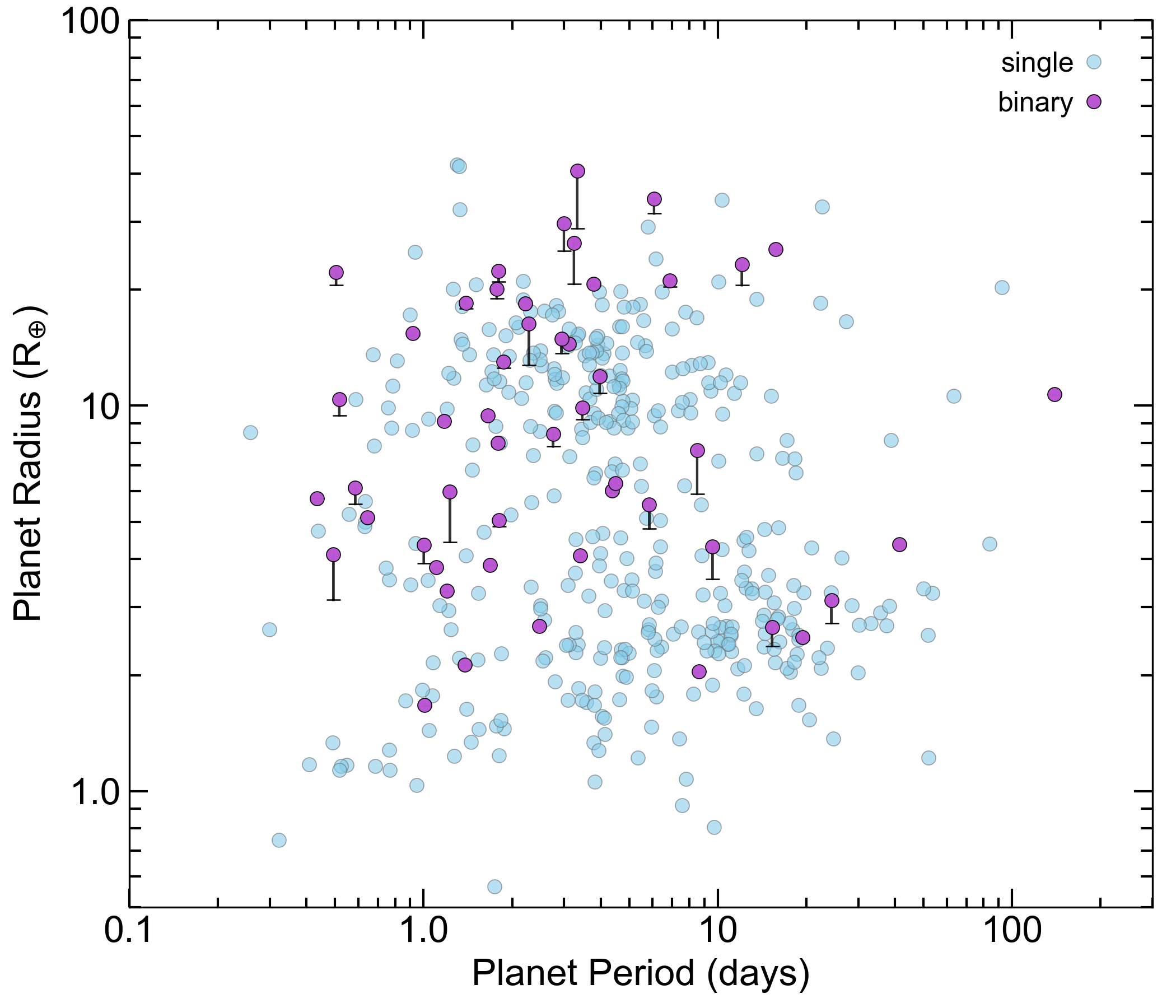
The second goal of my postdoc project is to measure the visual and spectroscopic orbits of binary stars found to host planets by Kepler, K2, and TESS. We began a monitoring campaign to measure the relative binary positions from speckle interferometry using the Alopeke and Zorro on Gemini N & S 8m telescopes, and the binary radial velocities using echelle spectra from NEID on the WIYN 3.5m and APF on the Lick 2m telescopes.
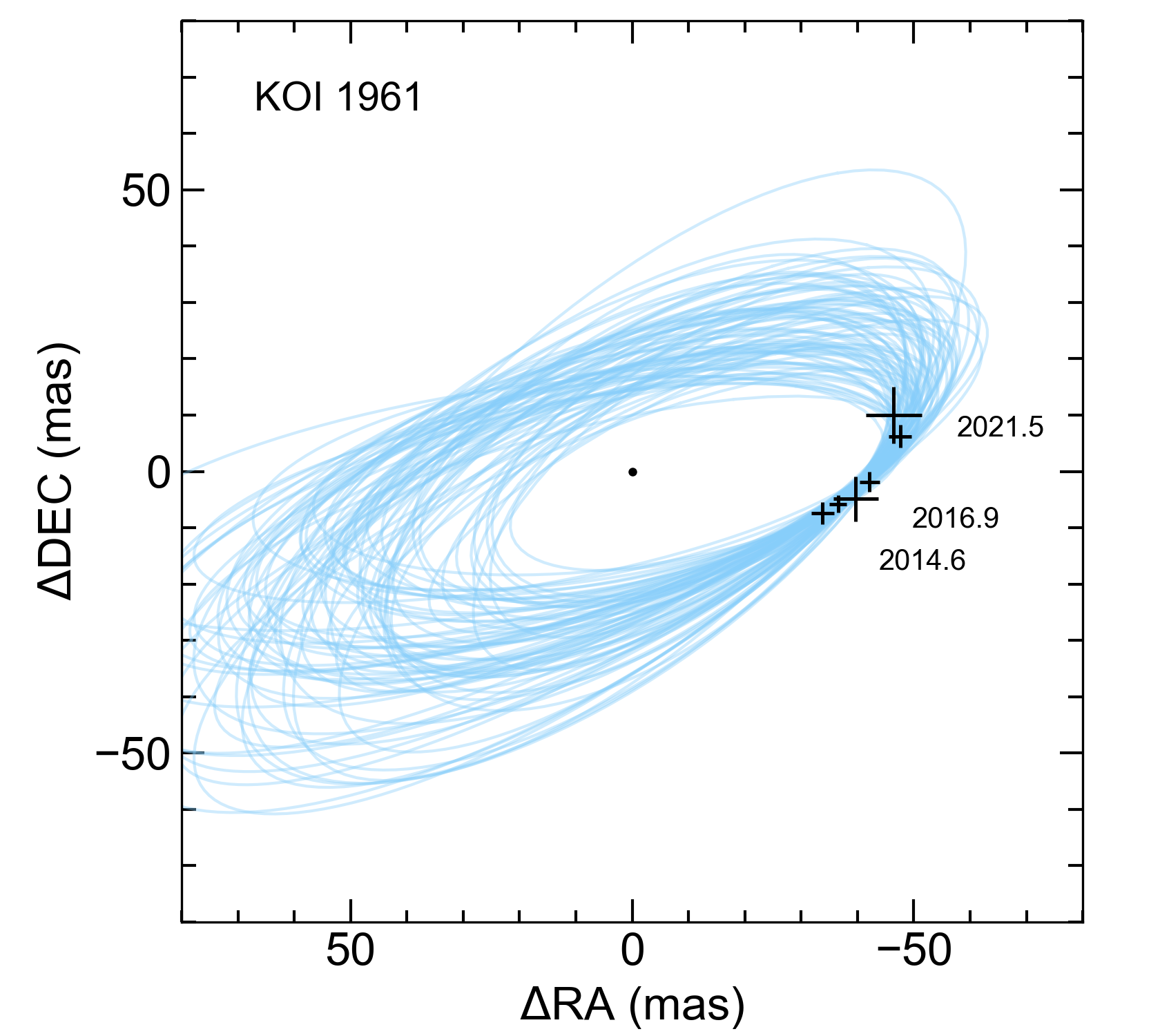
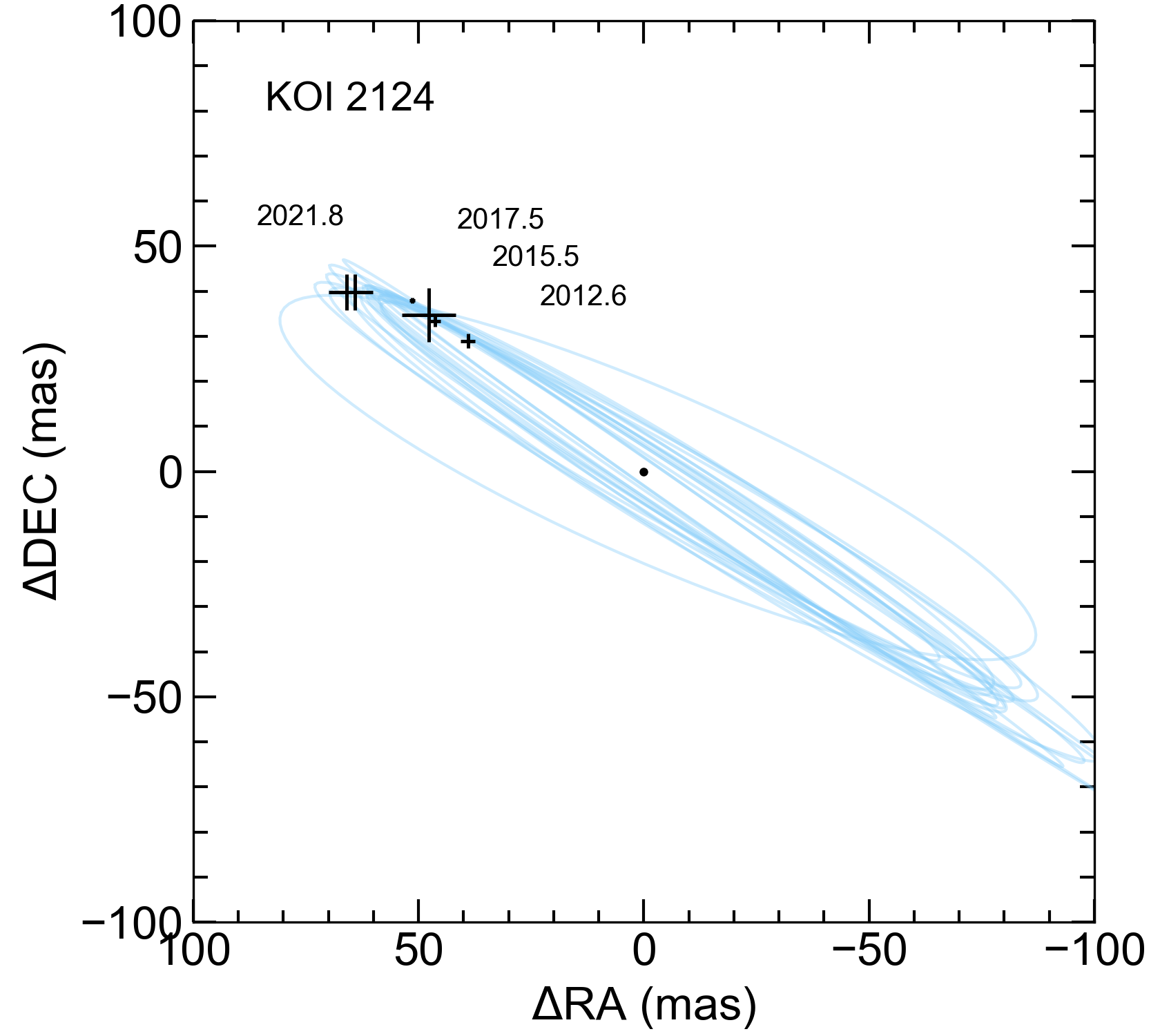
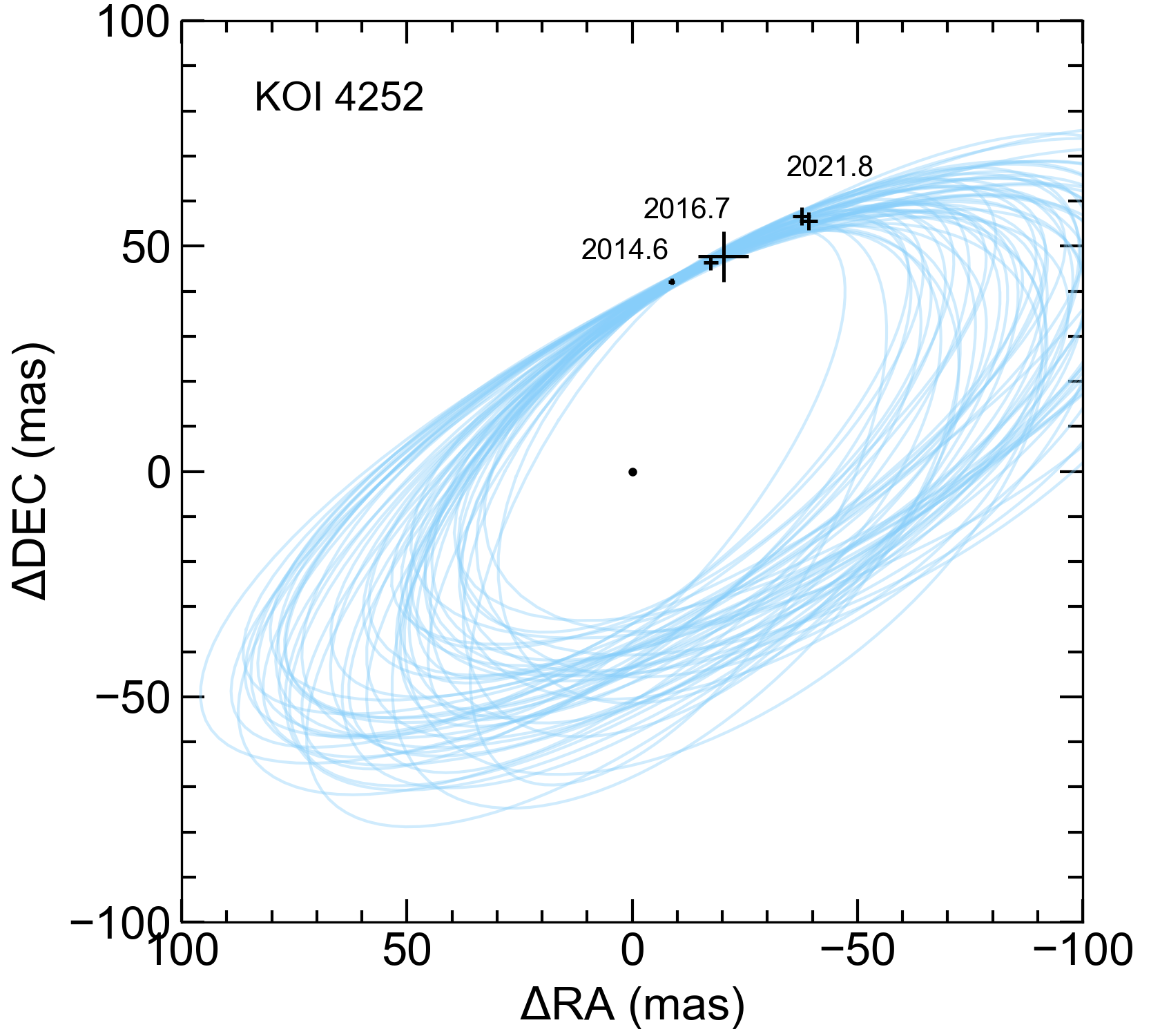
Visual Orbits of Spectroscopic Binaries
For my PhD dissertation, we determined the visual and spectroscopic orbits for 8 double-lined spectroscopic binaries by combining echelle spectroscopy from the APO 3.5m and CTIO 1.5m with long baseline interferometry from the CHARA Array. The fundamental parameters of binary stars are used to test stellar evolutionary models by comparing the observed and predicted stellar parameters, such as mass, radius and temperature. However, these are mostly eclipsing binaries with short orbital periods, which implies that the stars probably interacted in their early phases and are currently subject to tidal forces. So, it is not clear how applicable the parameters of close binaries are to evolutionary models of single stars. The solution to this problem is to expand binary star studies to longer period systems that are widely separated and not interacting. This requires the measurement of a visual orbit to estimate the orbital inclination, which is then combined with the spectroscopic elements to find masses.
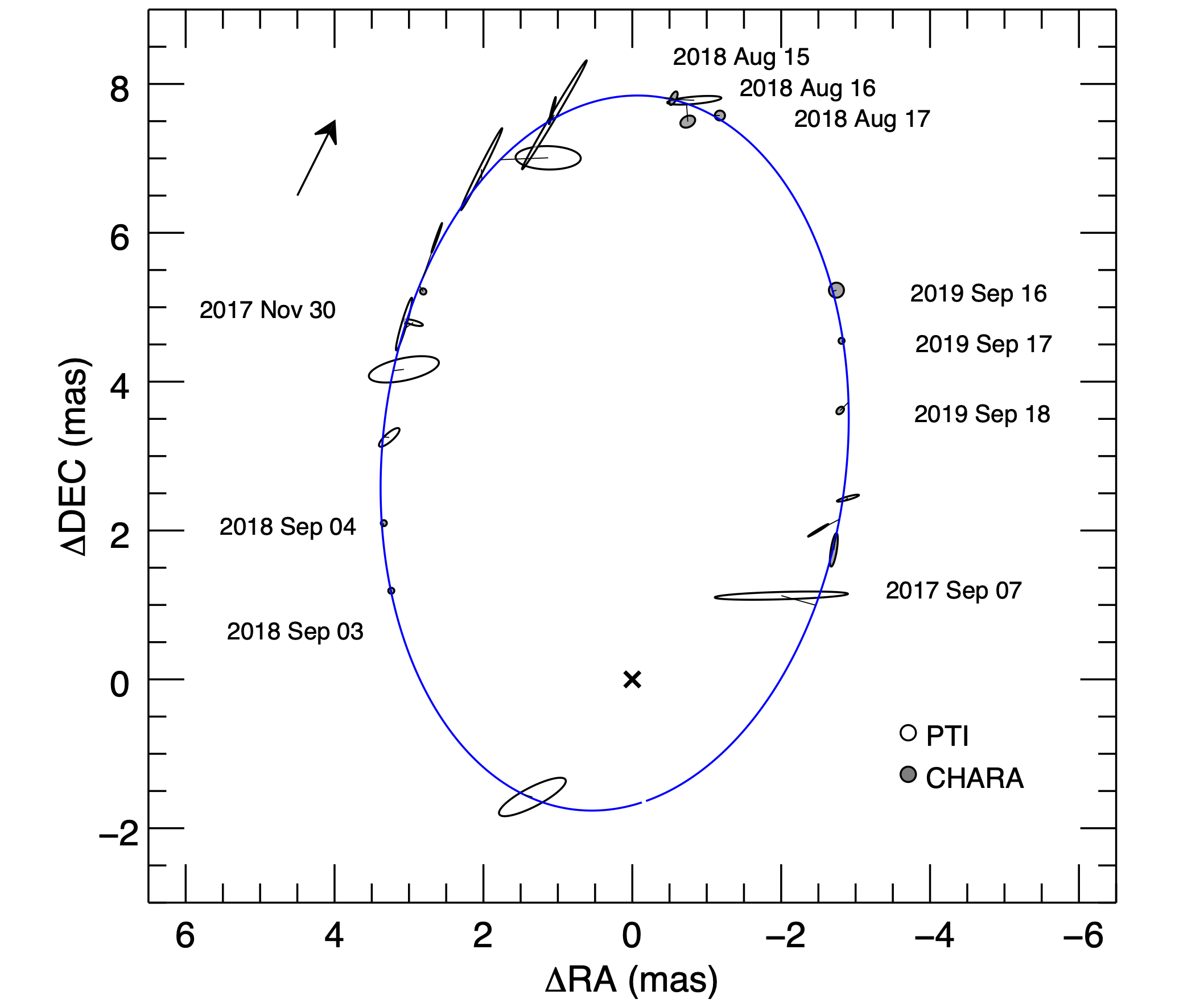
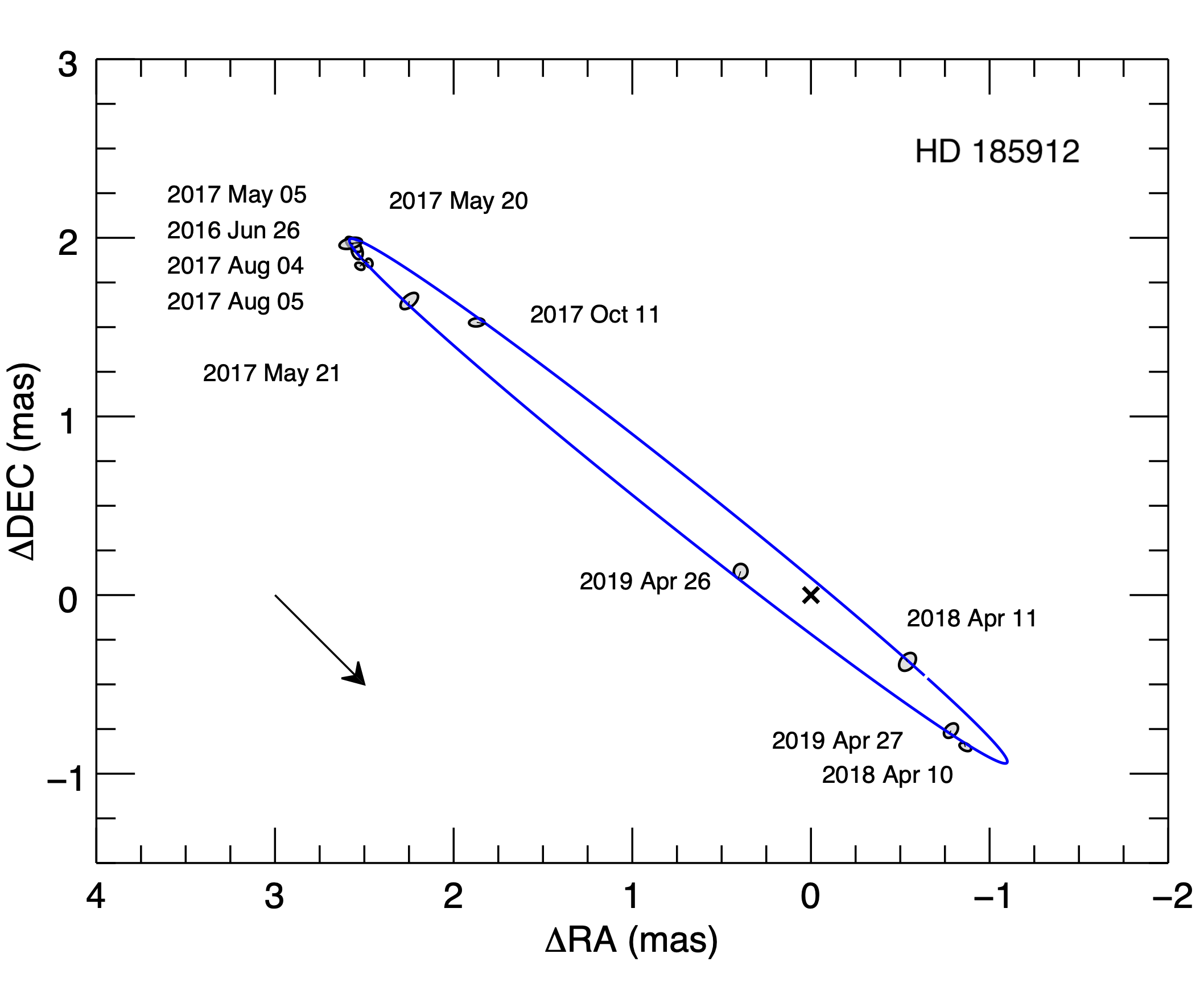
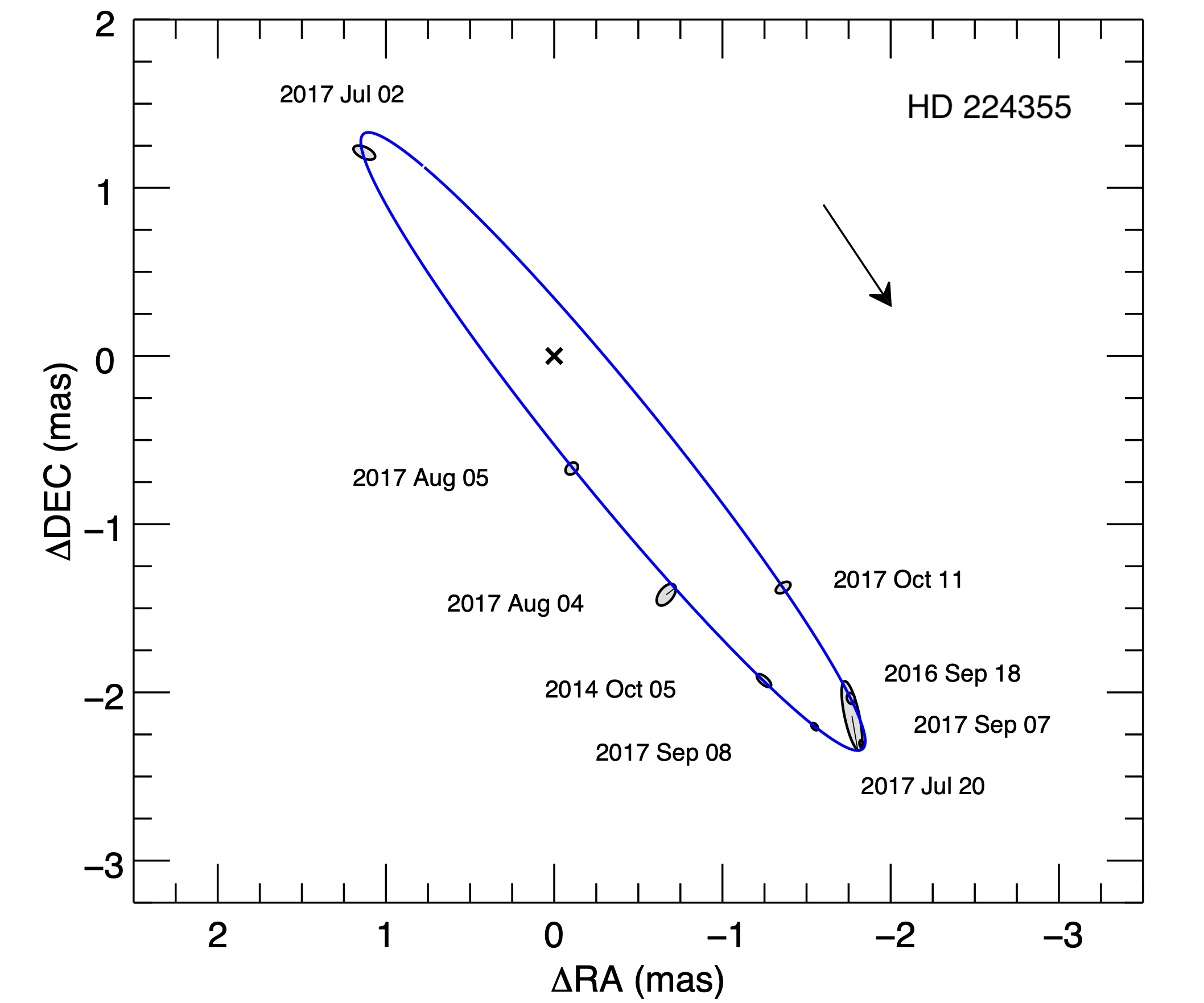
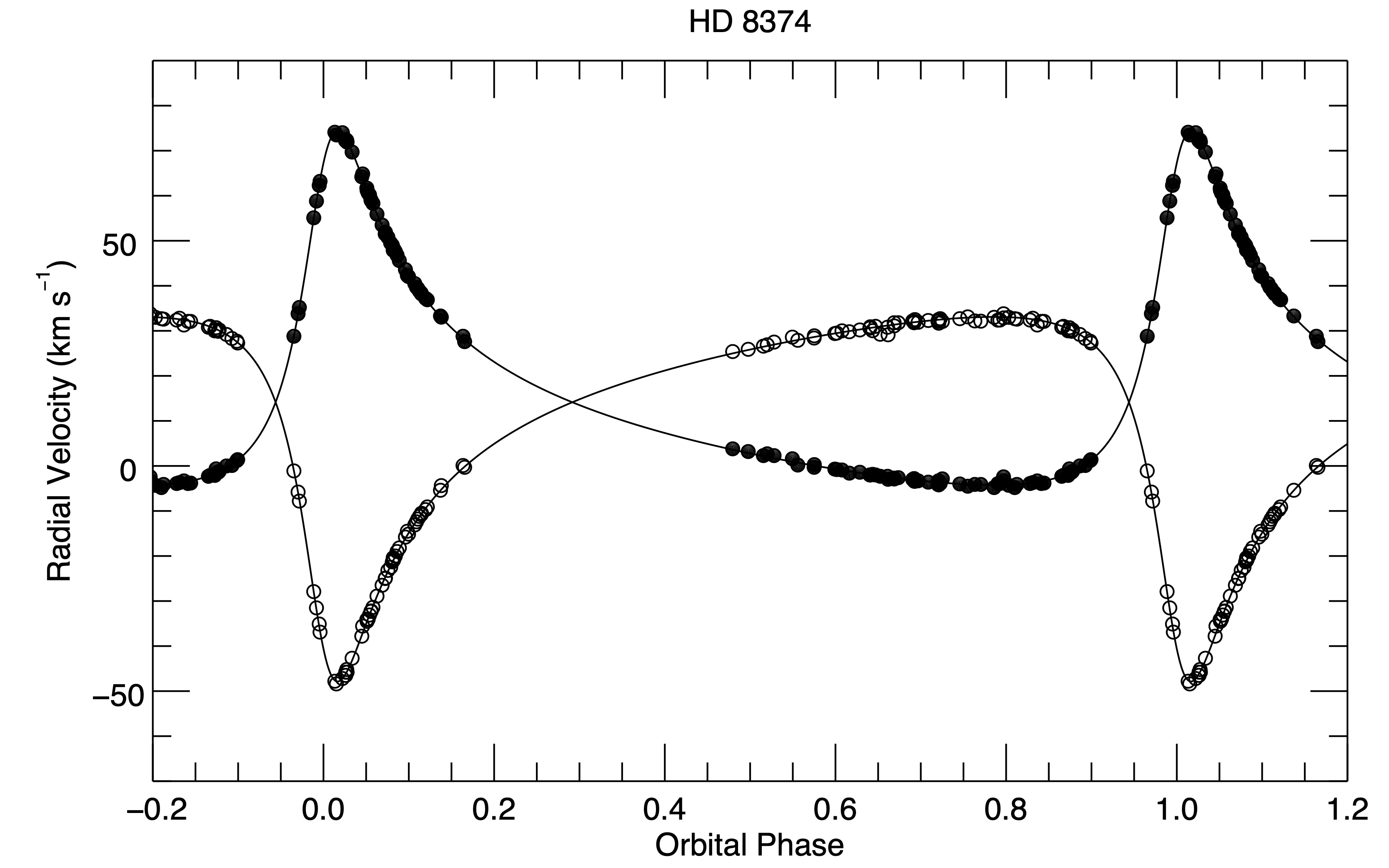
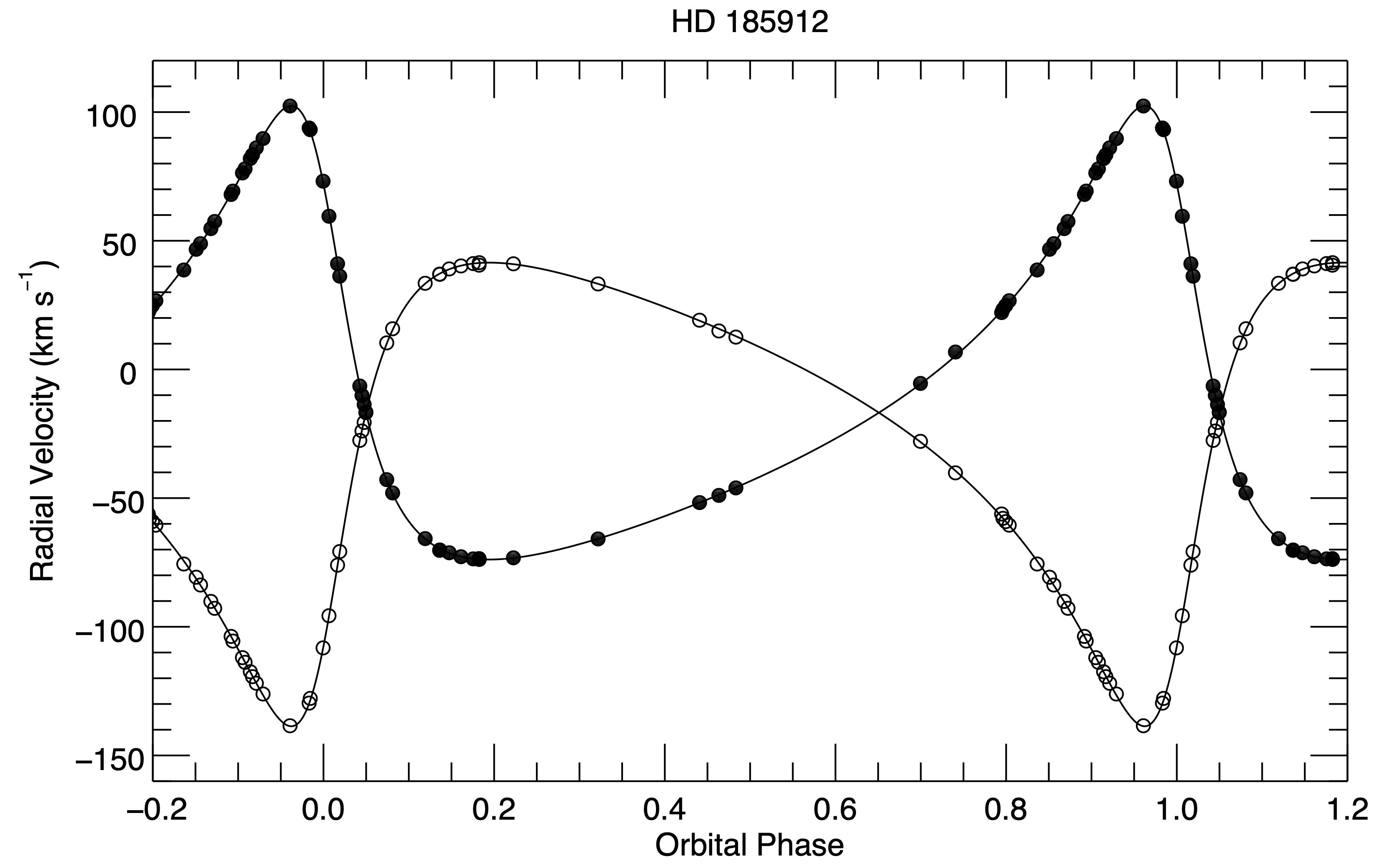
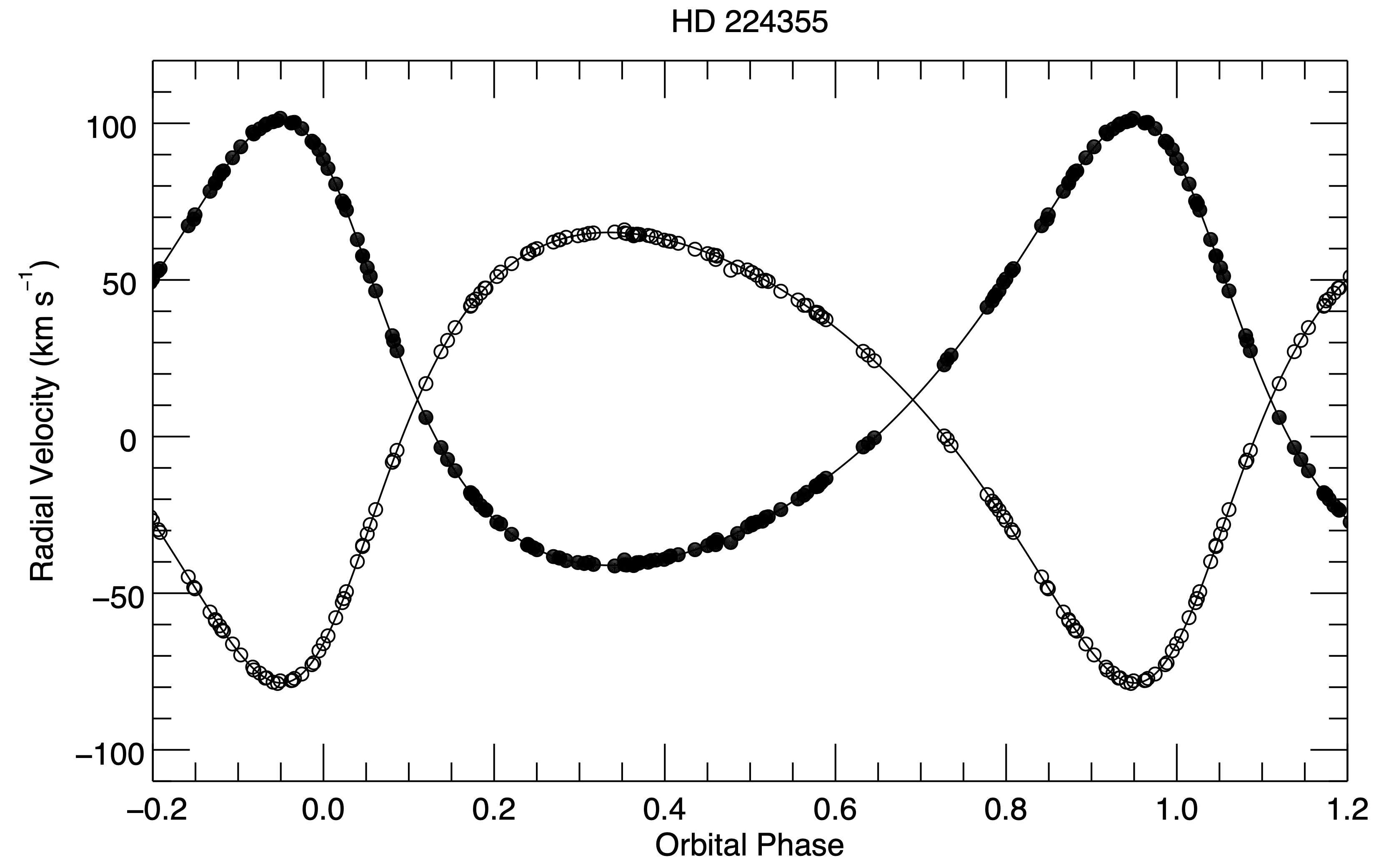
Read more at Lester et al. 2019a, Lester et al. 2019b, Lester et al. 2020, or watch a video of my talk at GRAM 2018.
A Photometric, Spectroscopic and Apsidal Motion Analysis of BW Aqr
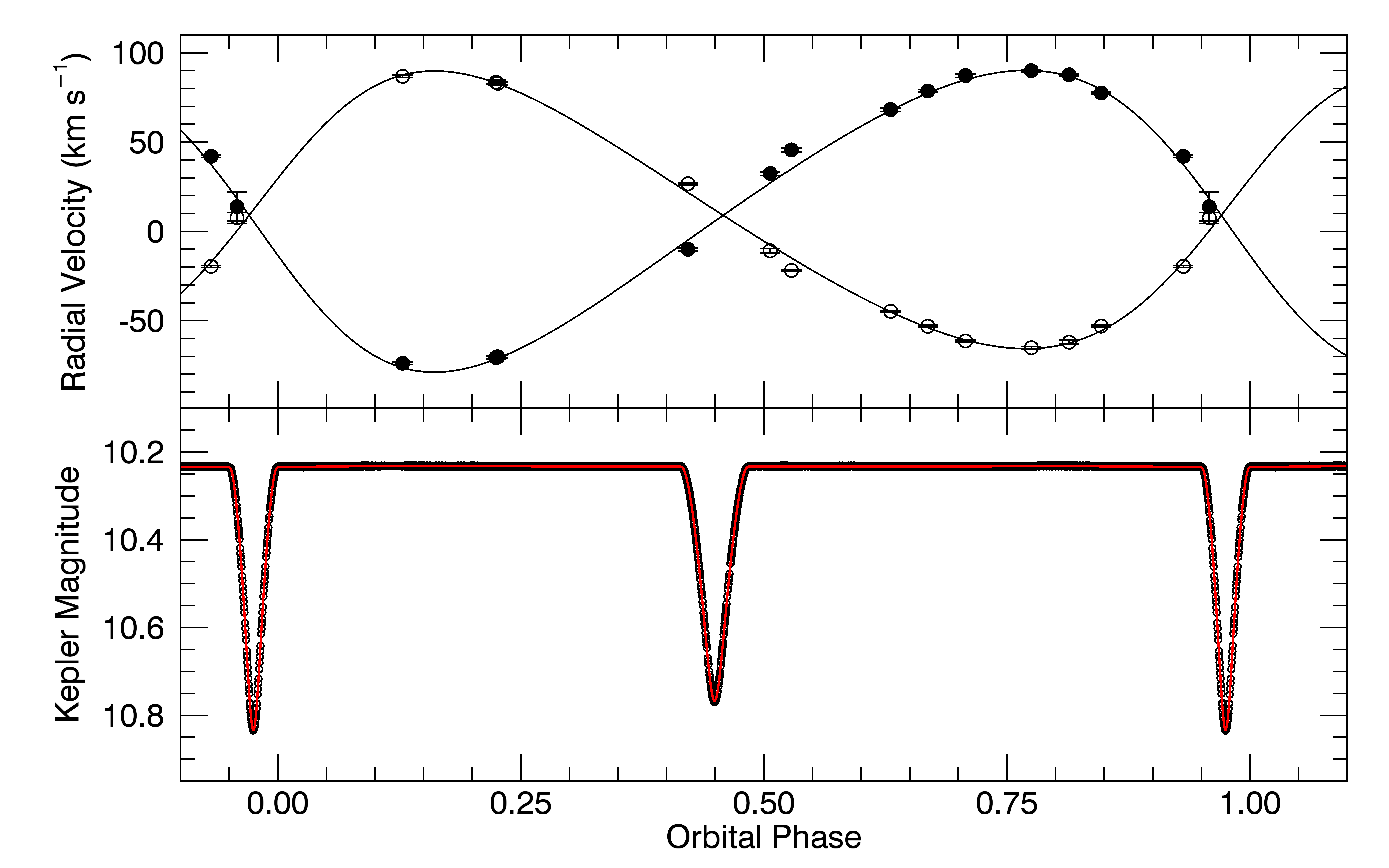 Eclipsing binary systems showing apsidal motion can be used to test the internal structure
predictions of stellar evolution models. For this purpose,
we present a photometric and spectroscopic analysis of the eclipsing binary BW Aquarii, an evolved
F-type binary with slow apsidal motion. We model the K2 C3 light curve using the Eclipsing Light
Curve code to determine several orbital and stellar parameters, as well as measure the eclipse times
to determine updated apsidal motion parameters for the system. Furthermore, we obtain high-resolution
spectra of BW Aqr using the CHIRON echelle spectrograph on the CTIO 1.5m for radial velocity analysis.
We then reconstruct the spectra of each component using Doppler tomography in order to determine the
atmospheric parameters. We find that both components of BW Aqr are late F-type stars with M1 =
1.365 +/- 0.008 Msun, M2 = 1.483 +/- 0.009 Msun, and R1 = 1.782 +/- 0.021 Rsun, R2 = 2.053 +/- 0.020
Rsun. We then compare these results to the predictions of several stellar evolution models, finding
that the models cannot reproduce the observed properties of both components at the same age.
Eclipsing binary systems showing apsidal motion can be used to test the internal structure
predictions of stellar evolution models. For this purpose,
we present a photometric and spectroscopic analysis of the eclipsing binary BW Aquarii, an evolved
F-type binary with slow apsidal motion. We model the K2 C3 light curve using the Eclipsing Light
Curve code to determine several orbital and stellar parameters, as well as measure the eclipse times
to determine updated apsidal motion parameters for the system. Furthermore, we obtain high-resolution
spectra of BW Aqr using the CHIRON echelle spectrograph on the CTIO 1.5m for radial velocity analysis.
We then reconstruct the spectra of each component using Doppler tomography in order to determine the
atmospheric parameters. We find that both components of BW Aqr are late F-type stars with M1 =
1.365 +/- 0.008 Msun, M2 = 1.483 +/- 0.009 Msun, and R1 = 1.782 +/- 0.021 Rsun, R2 = 2.053 +/- 0.020
Rsun. We then compare these results to the predictions of several stellar evolution models, finding
that the models cannot reproduce the observed properties of both components at the same age.
Read more at
Lester & Gies. 2018, AJ, 156, 8
K2 C0 Eclipsing Binary near EPIC 202062176
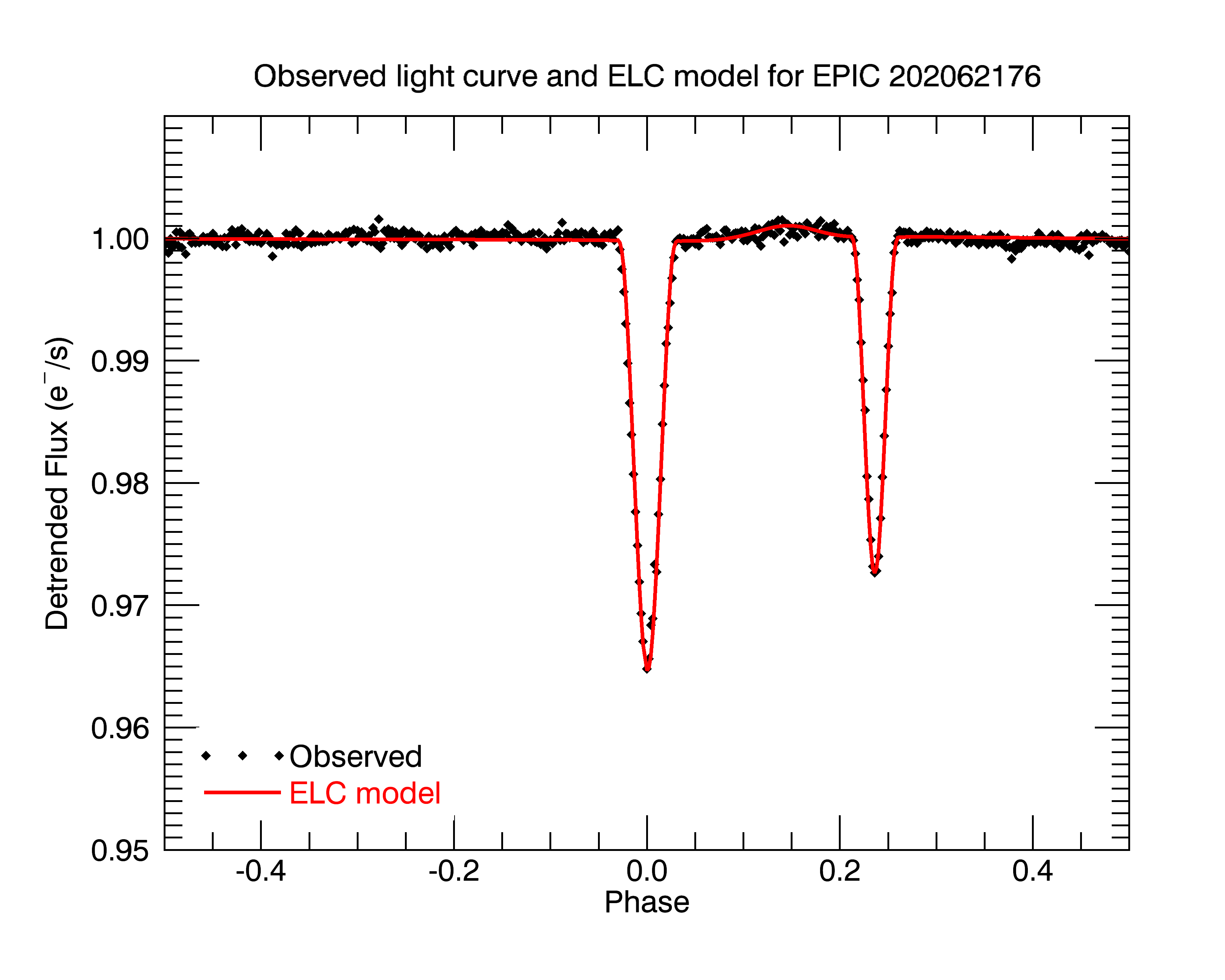 We completed a photometric and light curve analysis of an eccentric eclipsing
binary in the K2 Campaign 0 feld that resides in Sh 2-252E, a
young star cluster embedded in an H II region. Because there dozens of stars in this embedded
cluster fall within the Kepler aperture, we obtained spectra of the three brightest stars in the
crowded aperture to identify which is the binary system. We found that none of these stars are
components of the eclipsing binary system, which must
be one of the fainter nearby stars. However, these bright cluster members
all have remarkable spectra: Sh 2-252a (EPIC 202062176) is a B0.5 V star with
razor sharp absorption lines, Sh 2-252b is a Herbig A0 star with disk-like emission
lines, and Sh 2-252c is a pre-main sequence star with very red color.
We completed a photometric and light curve analysis of an eccentric eclipsing
binary in the K2 Campaign 0 feld that resides in Sh 2-252E, a
young star cluster embedded in an H II region. Because there dozens of stars in this embedded
cluster fall within the Kepler aperture, we obtained spectra of the three brightest stars in the
crowded aperture to identify which is the binary system. We found that none of these stars are
components of the eclipsing binary system, which must
be one of the fainter nearby stars. However, these bright cluster members
all have remarkable spectra: Sh 2-252a (EPIC 202062176) is a B0.5 V star with
razor sharp absorption lines, Sh 2-252b is a Herbig A0 star with disk-like emission
lines, and Sh 2-252c is a pre-main sequence star with very red color.
Read more at
Lester, Gies, & Guo. 2016, AJ, 152, 194